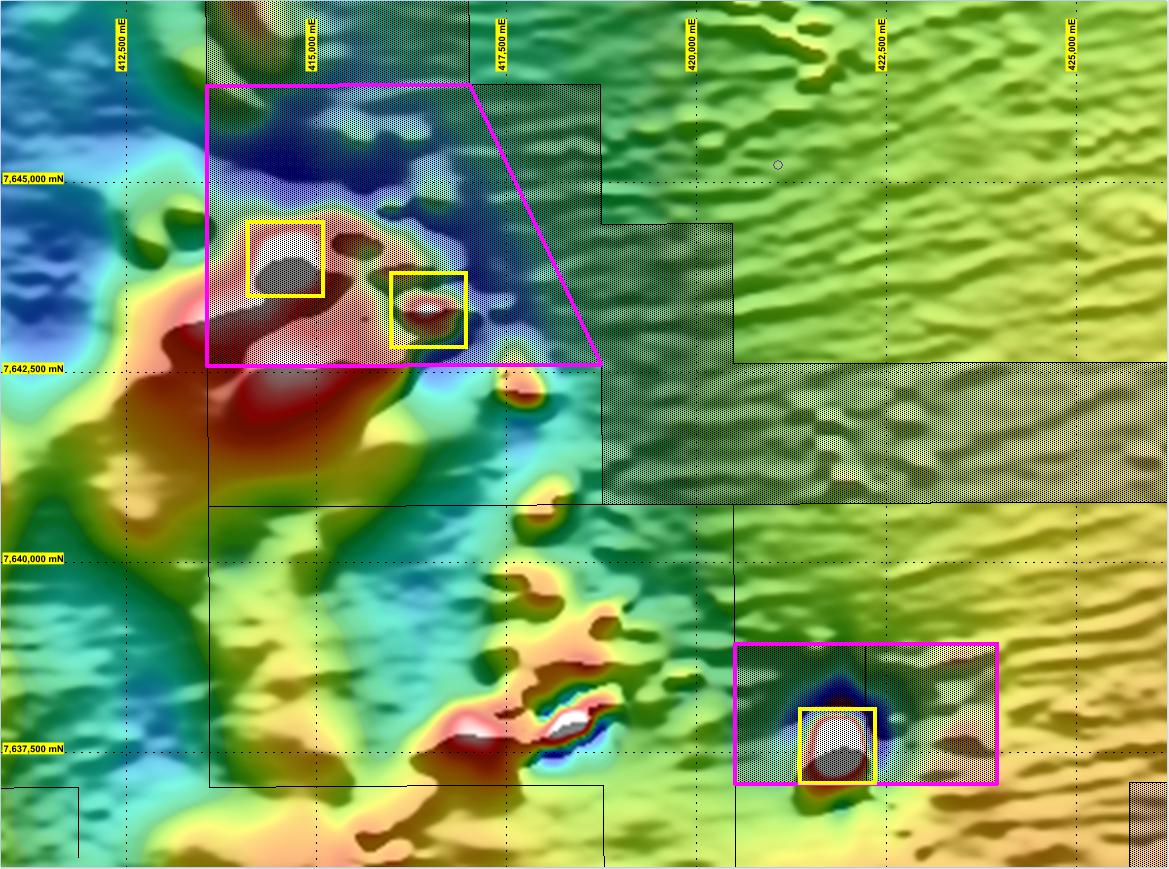West Arunta
Stansmore Project (Niobium ± REE, Iron Oxide Copper Gold)
STANSMORE PROJECT
The 100% owned West Arunta Stansmore Niobium-REE Project granted tenure extends over 173km² and is approximately 90km north of WA1 Resources’ Luni and P2 discoveries, Figure 1. The project consists of two high priority magnetic anomaly drill targets (Stansmore and Volt), and three secondary drill targets (Edi, Earl and Menlo) that may be prospective for Niobium-REE Carbonatite, or Iron-Oxide Copper Gold (IOCG), Figure 2.
The Company has scheduled a heritage survey to commence in July 2024 and is currently working through the approvals processes required to enable drilling to be undertaken as soon as possible. During September 2023 the Company executed the land access agreement with the Parna Ngururrpa traditional owners at our West Arunta Stansmore Niobium-REE Project at an on-country meeting held in Balgo, Western Australia. The Company is scheduled to complete heritage surveys in July 2024 and expects to commence a drilling program as soon as practical in Q3 2024, subject to the approvals processes being finalised.
During the quarter, the Company was a successful recipient of the government co-funded drilling program of the maximum of $180,000 to drill the Stansmore Project.
The Stansmore Project drilling will target a regionally prominent 700m long magnetic feature (Stansmore) and a larger ~3km wide magnetic anomaly (Volt). Recent discoveries by WA1 Resources and Encounter Resources have demonstrated the potential for the West Arunta region to host significant Nb-REE mineral systems.
WEST ARUNTA OVERVIEW
The Stansmore Project has had limited historic work completed within the project area with the broader area having limited exploration focussed on gold, copper and diamonds. BHP Minerals Limited completed 6 shallow RAB drillholes over the Stansmore magnetic anomaly in 1983 (WAMEX Report A12302) exploring for diamonds. Drilling at the main Stansmore magnetic anomaly (ST2) consisted of 5 drillholes with a maximum depth of 12m. Lithologies intersected by the drilling included ultrabasic rock, ‘possibly pyroxenite’, and sericitic altered claystone. Overall, the results did not display kimberlitic affinities to potentially host diamonds and the tenement was surrendered in the following year. Encouragingly the RAB drilling has highlighted the shallow depth of cover and saprolite interface. The drilling did not adequately test the magnetic anomaly which starts at ~150m depth.
The WA1 discoveries at Luni and P2 have been large first order geophysical anomalies which had never been drilled.
The niobium mineralisation discovered to date at WA1 Resources’ Luni Project are unique to Niobium deposits globally due to the high tenor of niobium with results >2% niobium. The identification of Niobium and Rare Earth mineralisation associated with carbonatite intrusions by WA1 Resources and Encounter Resources nearby in their first ever drill programs signifies the extremely prospective and underexplored nature of the West Arunta.
NIOBIUM OVERVIEW
Niobium (Nb) is a ductile refractory metal that is highly resistant to heat and wear. Like tantalum, it is resistant to corrosion owing to the formation of a surface oxide layer.
Approximately 90% of niobium use is attributed to the steel industry, predominantly as a micro alloy with iron. The addition of small, relatively cheap, amounts of niobium (much less than 1%) significantly increases the strength and decreases the weight of steel products. This results in more economic, beneficial products for use in the construction industry, in gas and oil pipelines, and in the automotive industry where weight savings result in increased performance and fuel reduction.
Niobium, along with other refractory elements such as tantalum, is also used in nickel and nickeliron superalloys, particularly for applications requiring strength and heat resistance. Uses for such superalloys include turbine blades in jet engines within the aeronautic industry, and gas turbines in the energy industry.
Niobium becomes a superconductor at very low temperatures. When alloyed with titanium (NbTi) or tin (Nb3Sn), it produces the superconducting magnets used in magnetic resonance imaging (MRI) scanners, nuclear magnetic resonance (NMR) equipment and particle accelerators such as the Large Hadron Collider at CERN (The European Organization for Nuclear Research).
Niobium is one of a suite of commodities identified by the Australian Government as critical minerals, i.e., minerals (or elements) considered vital for the well-being of the world's economies, yet whose supply may be at risk of disruption. Niobium is essential for advanced technology.

West Arunta Regional Map

Stansmore 3D mag inversion

Volt and Ions Prospects Magnetic Inversion


West Arunta ground gravity survey map

